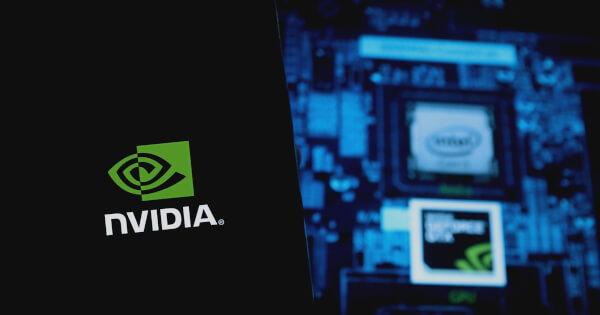NVIDIA’s CUDA-QX 0.4 Unleashes Quantum Leap—Can Wall Street Keep Up?
NVIDIA just dropped a quantum bomb—CUDA-QX 0.4 is here, and it’s rewriting the rules of computational supremacy.
Quantum computing just got a turbocharge
No more baby steps. NVIDIA’s latest CUDA-QX update slashes through quantum noise like a hot knife through butter. Classical qubit simulations? Obliterated. Hybrid quantum-classical workflows? Streamlined into submission.
Wall Street’s quant bots are sweating
While hedge funds waste millions on ‘AI-powered’ trading algos that barely outpace a coin flip, NVIDIA’s handing researchers the keys to actual computational revolution. The irony? This could make today’s crypto mining rigs look like abacuses by 2030.
The verdict: Buy the rumor, sell the ‘quantum-ready’ stock pumps. The real disruption’s happening in the lab—not your Robinhood portfolio.

In a significant leap for quantum computing, Nvidia has unveiled the latest version of its quantum computing software, CUDA-QX 0.4. This update brings a suite of new features aimed at improving quantum error correction (QEC) and application development, according to the NVIDIA developer blog.
Quantum Error Correction Advancements
As quantum processor unit (QPU) builders strive to create commercially viable quantum supercomputers, addressing quantum error correction is crucial. CUDA-QX 0.4 enhances this with a comprehensive API that supports the development of end-to-end workflows. This includes defining novel codes, simulating circuit-level noise models, and configuring realistic decoders that work alongside physical QPUs.
Detector Error Model Automation
The release introduces the ability to automatically generate a detector error model (DEM) from specified QEC circuits and noise models. This allows for efficient circuit sampling and syndrome decoding through the CUDA-Q QEC decoder interface. Developers can access detailed documentation and examples via the NVIDIA API.
Tensor Network Decoding
CUDA-QX 0.4 also features a tensor network decoder, supporting Python 3.11 and above. This decoder offers flexibility, accuracy, and enhanced performance using GPU-accelerated cuQuantum libraries. Notably, it achieves logical error rate parity with Google's tensor network decoder while remaining open source.
BP+OSD Decoder Improvements
Several enhancements have been made to the Belief Propagation + Ordered Statistics Decoding (BP+OSD) implementation, including adaptive convergence monitoring, message clipping for numerical stability, and dynamic scaling for min-sum optimization. These improvements provide greater flexibility and monitoring capabilities for researchers.
Generative Quantum Eigensolver (GQE)
In a MOVE to integrate AI with quantum circuit design, NVIDIA has introduced a Generative Quantum Eigensolver (GQE) in the Solvers library. This hybrid algorithm leverages generative AI models to find eigenstates of quantum Hamiltonians, potentially overcoming convergence issues faced by traditional methods like the Variational Quantum Eigensolver (VQE).
The CUDA-QX 0.4 release represents a substantial step forward in quantum computing research and development, providing researchers with powerful tools to advance their work.
Image source: Shutterstock- nvidia
- quantum computing
- cuda-qx
- technology

